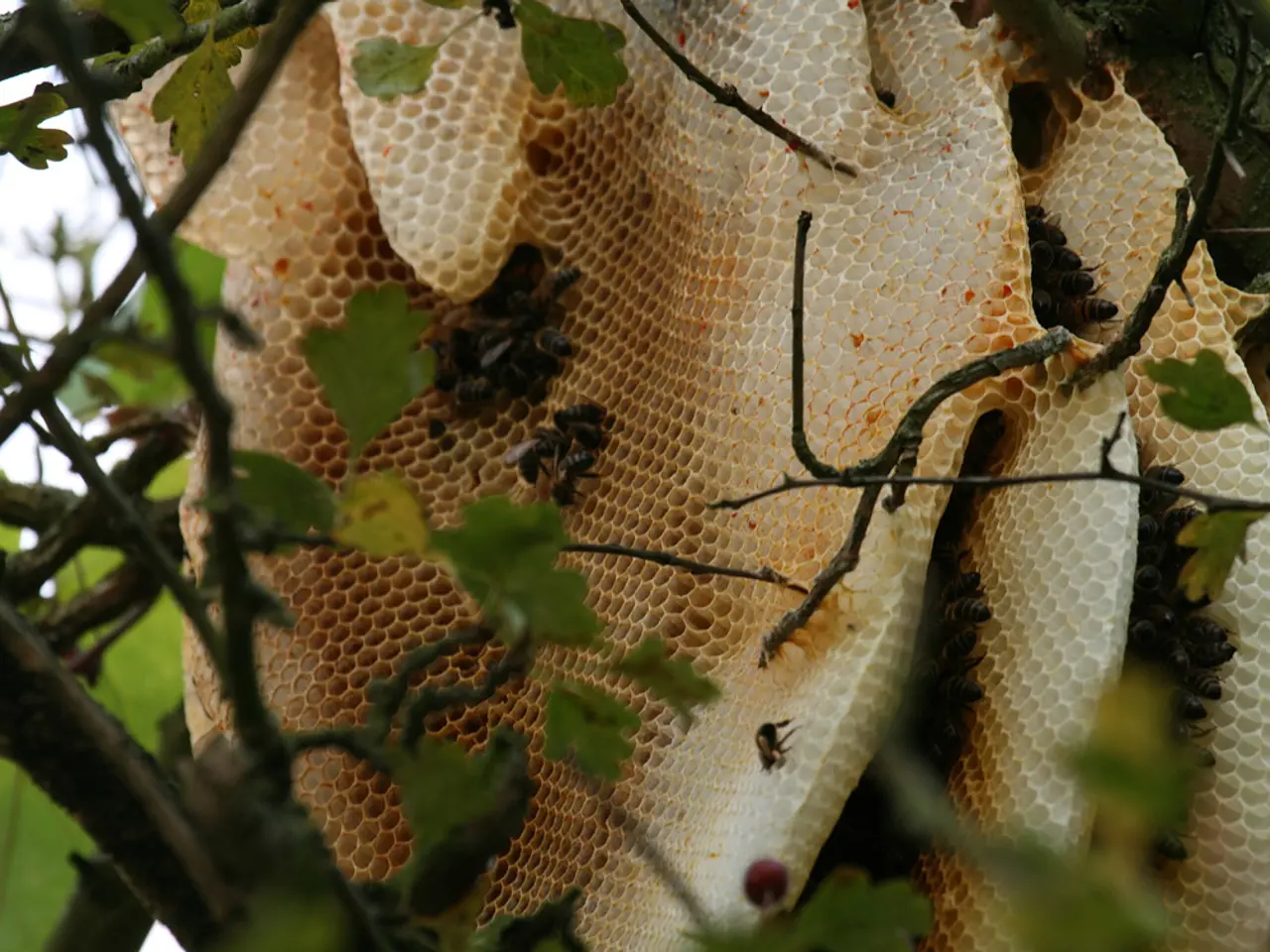Supporting Native Bees: A Handy Guide Outlining Steps to Aid Local Bee Populations
In the heart of Ohio, gardeners are playing a crucial role in bee conservation. With the increasing threats to bees, such as lack of forage, pests, pathogens, pesticides, invasive plants, climate change, and lack of suitable nesting sites, it's essential to create gardens that cater to these vital pollinators.
A native plant-based, structurally and seasonally diverse garden is the key to effective support for native bees in Ohio. By planting a diverse array of native flowering plants that bloom successively throughout the growing season, we can offer both nectar and pollen sources of high nutritional value. This includes trees like maple, basswood/linden, crabapple, and serviceberry, shrubs such as ninebark, pussy willow, sumac, viburnum, and a variety of flowers with different heights, shapes, and colors to meet the needs of diverse bee species.
To optimize native bee support, it's important to use native plants that native bees are specialized to forage on. Incorporating herbs like lavender, basil, borage, dill, fennel, oregano, and catnip near vegetable gardens can attract many pollinators. Maintaining undisturbed stems and dead plant material provides nesting habitat for stem-nesting bees such as carpenter bees and yellow-faced bees. Alternatively, collecting hollow/pithy plant stems and placing them upright in protected containers can simulate natural nesting sites.
Gardens can also be designed to support the lifecycles of butterflies and moths, benefiting bees and other pollinators. The practice of "soft landings" gardens beneath trees is particularly beneficial. Protecting or adding pollinator habitat can increase overall biodiversity, including more bees, butterflies, birds, and beneficial insects, which benefits garden ecosystem health.
Ohio is home to approximately 500 native bee species, including common types like mason bees, mining bees, leaf cutting bees, and sweat bees. These bees rely on flowers for food to feed their young, and their fuzzy bodies and branched hairs help them collect pollen into special structures.
Gardeners can learn which plants are most attractive to bees by observing flowers in private and public gardens. Weeds such as clover, dandelion, and goldenrod provide critical food resources for bees. Bees forage for food close to their nesting sites, a practice called central place foraging.
To further support native bees, it's essential to avoid the use of pesticides on plants visited by bees. An integrated pest management (IPM) approach should be adopted to reduce pest pressure. Purchased or constructed "bee hotels" can also be used, but they must be regularly cleaned and rotated out of use to prevent disease buildup.
If space allows, consider planting a small meadow or prairie patch full of native wildflowers to provide food from spring through fall. By adapting our gardening practices to protect bees and other pollinators, we can play a significant role in their conservation.
- In the gardening world of Ohio, native plant-based gardens, particularly those with a structurally and seasonally diverse arrangement of trees, shrubs, and flowers, are crucial for bee conservation.
- The selection of native flowering plants that bloom throughout the growing season aims to offer high-nutrition nectar and pollen sources for native bees, benefiting species like mason bees, mining bees, leaf cutting bees, and sweat bees.
- To optimize native bee support, it's essential to use plants that native bees are specialized to forage on, such as lavender, basil, borage, dill, fennel, oregano, catnip, and a variety of native herbs.
- A conservation-minded lifestyle can include gardening practices like maintaining undisturbed stems and dead plant material for nesting sites, as well as designing gardens to support butterfly and moth lifecycles, increasing overall biodiversity and garden ecosystem health.
- To aid in bee conservation, gardeners should avoid using pesticides on plants visited by bees and adopt an integrated pest management (IPM) approach, avoid disturbing potential nesting sites, and periodically clean and rotate bee hotels to prevent disease buildup.




